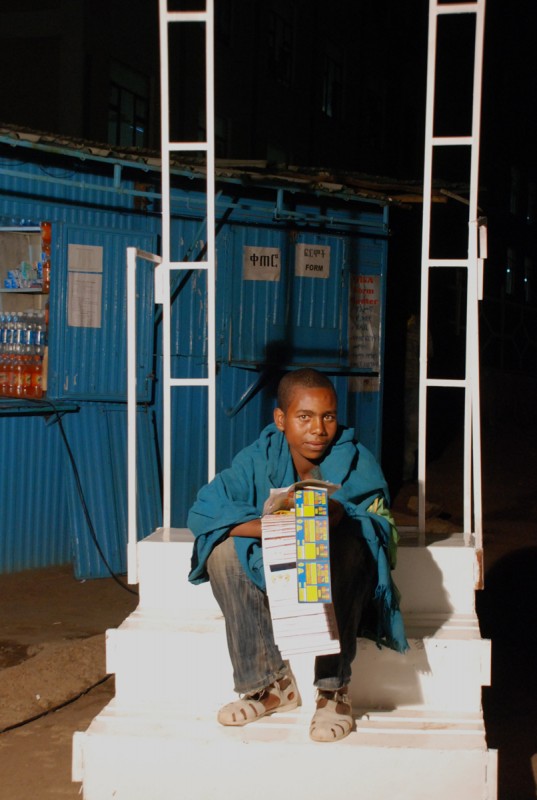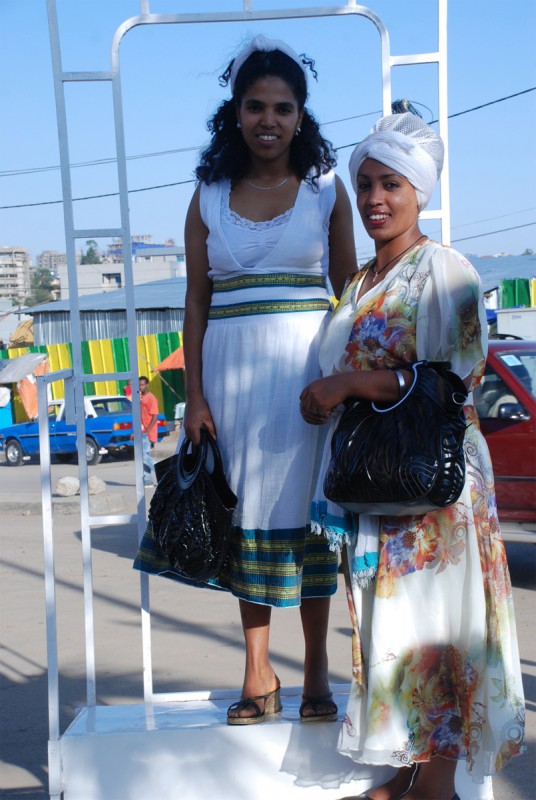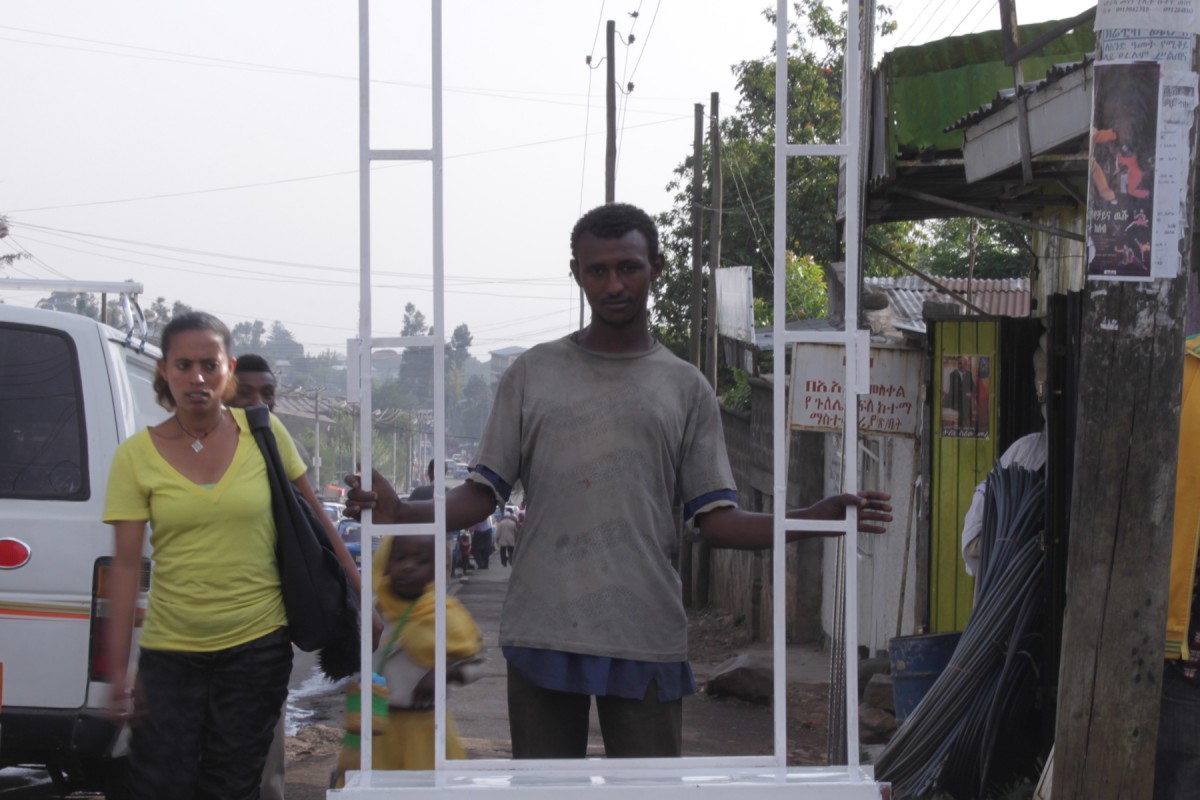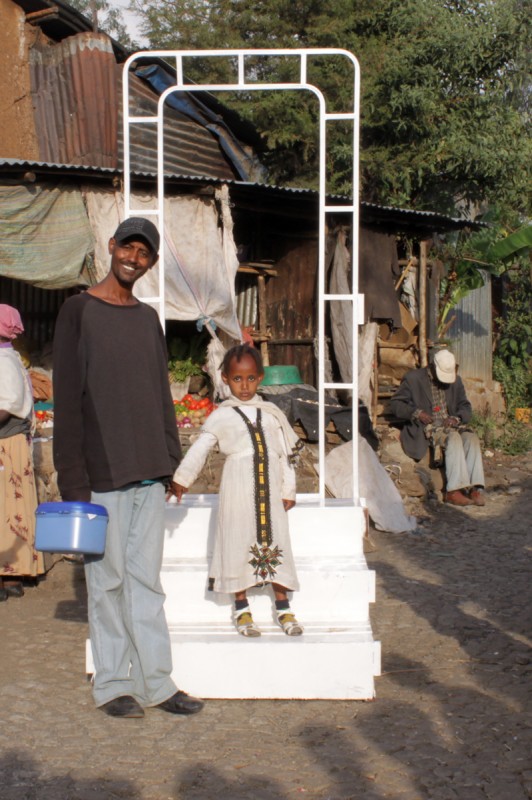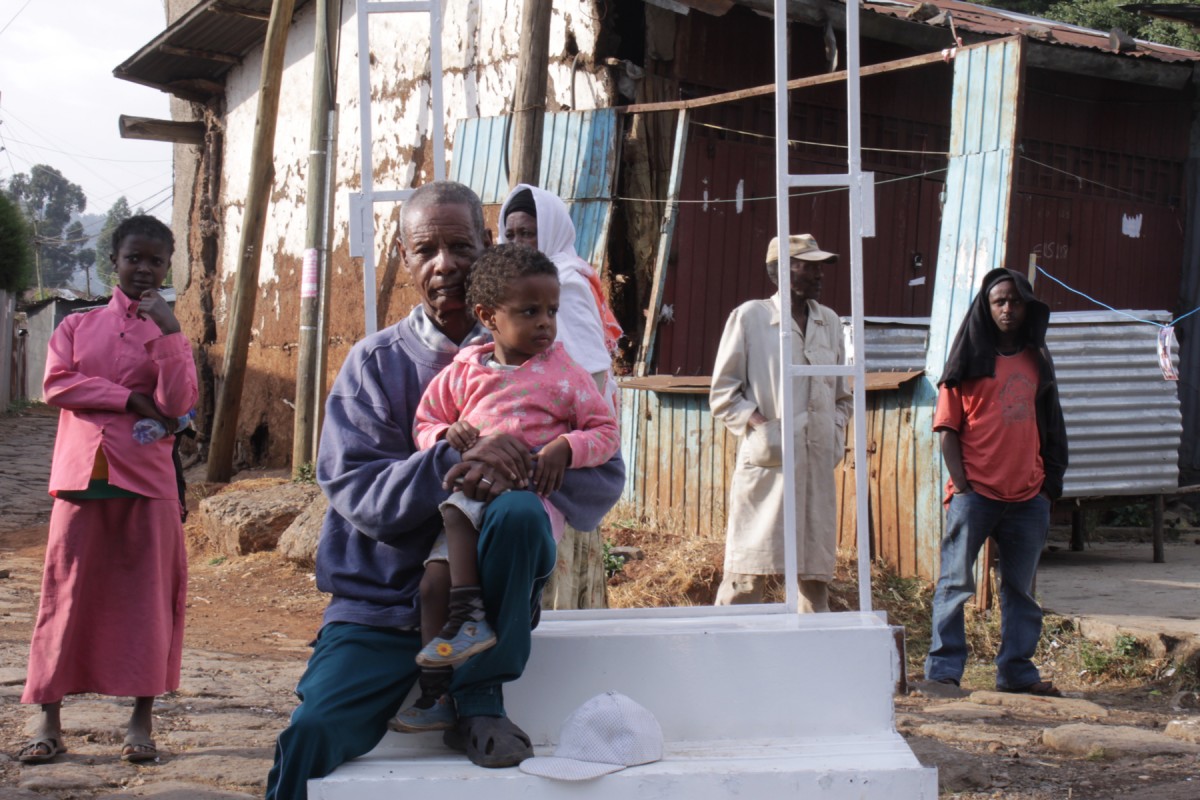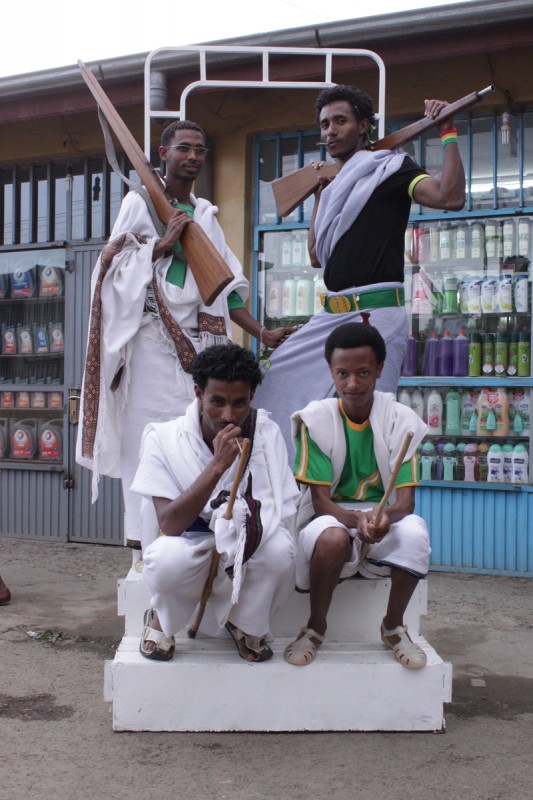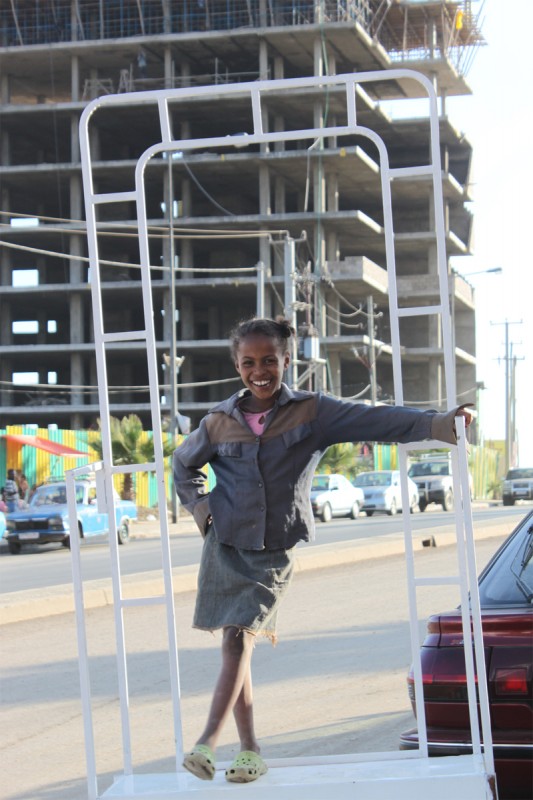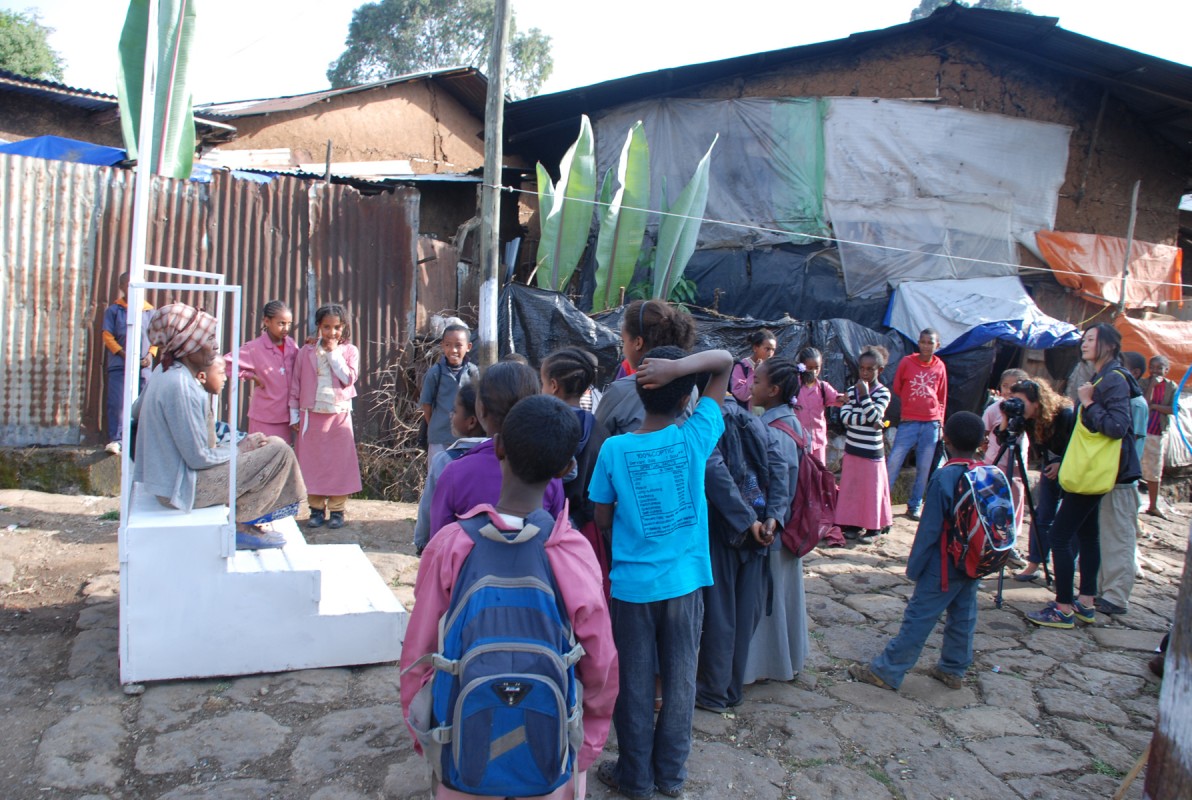Alkistis Thomidou, Christina Werner, Helen Zeru, Norgard Kröger
City Portrait, 2012
The neighborhood has a lot to say. The microcosmos of the neighborhood becomes the background of the portrait. The idea is to create the conditions so that private and public life in the moment of a portrait overlap. Back- and foreground bring together people and city.
Visitors tend to document and capture the city through images trying to catch the pulse of street life. In those images people, although present, are the background and stay anonymous while the city’s build features play the role of the foreground.
Having experienced that people on the streets on Addis are hesitating or uncomfortable being photographed in public spaces, it seems on the other hand a common thing to go with the family, mostly as a sunday habit, to photo studios to shoot family portraits.
The protagonists in those sunday pictures and family portraits, taken behind closed doors in a nearby photo studio, are eponymous, they have a name, they are in the foreground. But the city they live in is absent, the background is a staged or ficional one.
City Portrait tries to create a setting that allows private and public life to overlap in the moment of the portrait. Back- and foreground bring together everyday people and everyday life in the city. Starting point, is the idea of a mobile photo studio. The microcosmos of a a neighbourhood becomes the background of the portrait. City Portrait aims to not focus on touristic and prominent sites that have always been in the focus and have been widely documented. The neighbourhood, not only the generic main squares and meeting points, has a lot to say about social constellation, the history and the environment where a family comes from. A neighbourhood might change with rapid pace or it might look the same since decades, but the portraits captured a very specific moment in the coexistence of the city’s build structures and its inhabitants.
City Portrait performed the idea of an mobile outdoor photo studio during different times of the day, trying to capture a part of the social dynamics and the everyday structure and daily rhythms of a specific neighbourhood.
In the late afternoons and especially around and after sunset the artificial light control togehter with a mobile platform photoframe creates an illuminated space in the dark cityscape. This notion of the interior of a photo studio and photography in public space blend into one another. The photo frame and the light setup become tools to bridge between two traditions in photography we are all familiar with.
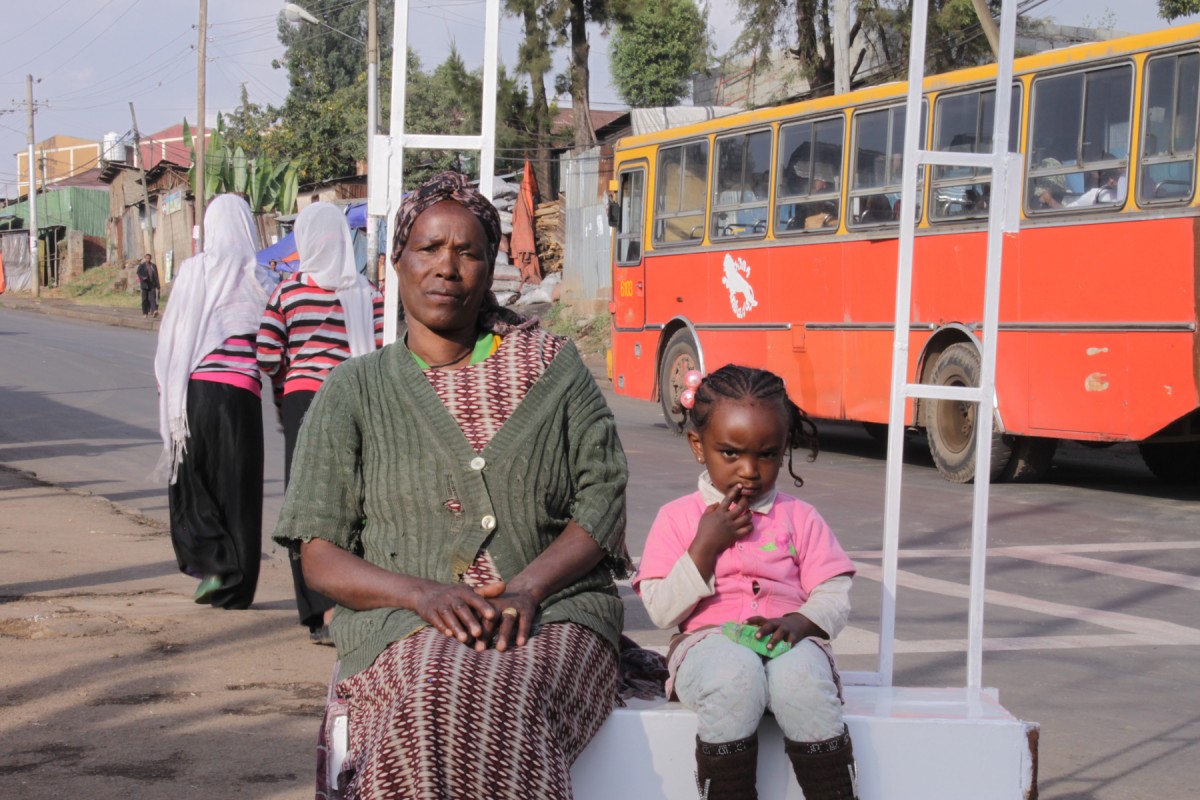
City Portrait, 2012
